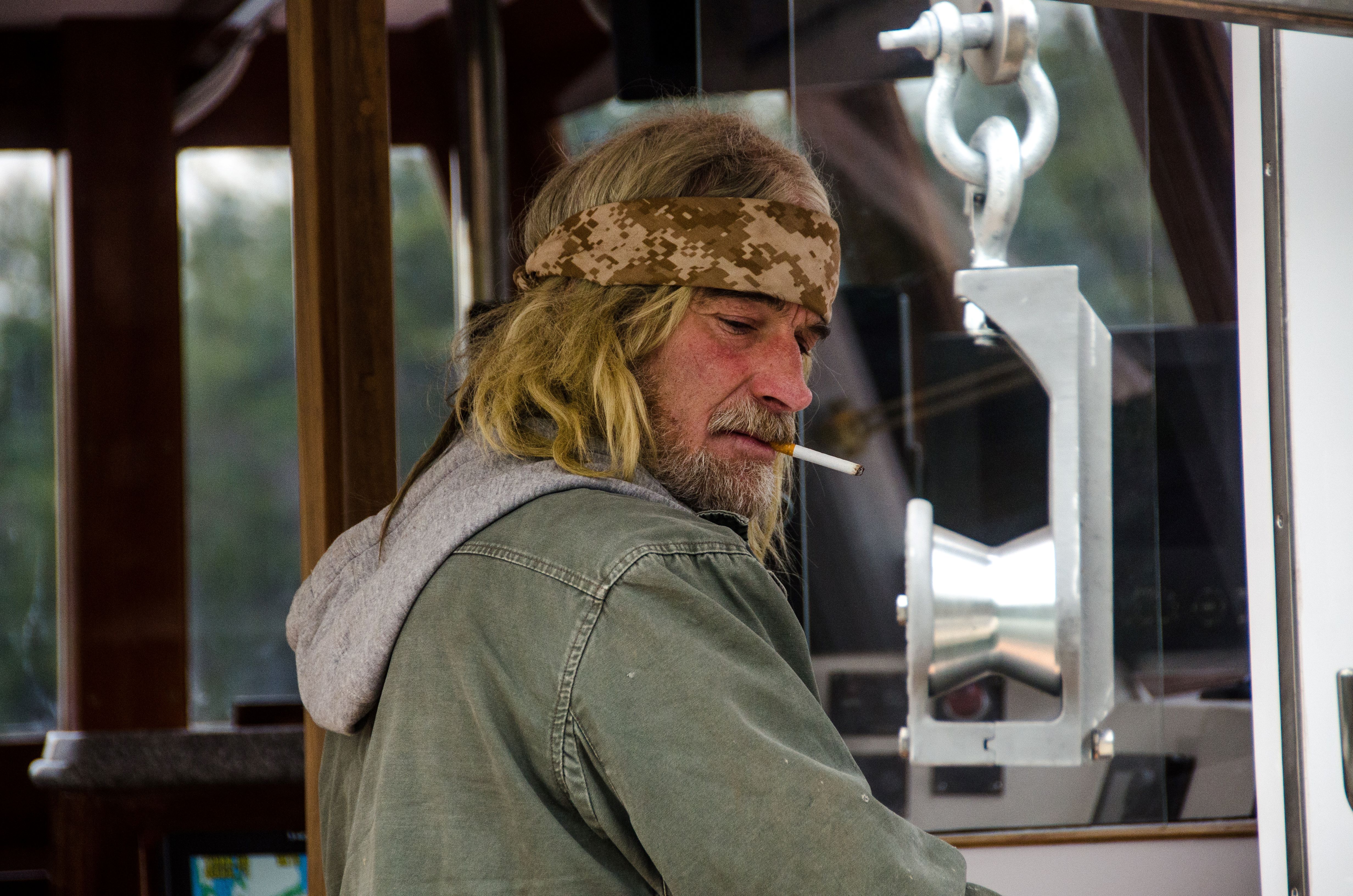The first time I ever saw Jimmy Tripp was in late 1982. Jimmy had his boat, the Day Star, loaded with big wooden Anderson traps and was heading offshore. It was snowing and the flakes vanished in the water of Spruce Head harbor. Tripp had his head sticking out a side window to see where he was going—and he was smiling. Some people just love the life, and wooden boats. “There’s something more personal about a wooden boat,” Tripp says. “I don’t know, they have a soul.”

Since then, Tripp had a 72-foot trawler, a new boat built in 1995, the Sea Wife featured in the February 1996 National Fisherman, and another, the Outer Fall, built in 2018—all wood. “I had one fiberglass boat for about eight months,” he says.
“We built his last two boats, the Sea Wife and the Outer Fall,” says Peter Kass, owner of John’s Bay Boat Company in South Bristol, Maine. “We have the Outer Fall on the ways right now. Doing some maintenance on her.” Kass started working on wooden boats at age 17 and opened his own shop when he was 23. “We’ve built 78 boats,” he says, noting his John’s Bay boats are popular with fishermen who enjoy the comfort afforded by wood.
“We build them the standard way,” Kass says. “Cedar on oak. We use white oak for the ribs. We get that from a guy in Ohio. The first time I bought wood from him, I flew to Cleveland, rented a car, and we drove around looking at trees. Now I just buy it. I have plenty for a while.”
Kass uses 2.5 by 1.5-inch white oak for the ribs and much heavier dimensions for the keel, stem, and other framing. He gets his cedar from Downeast Maine.

“Jimmy’s boat is 47 feet by 15.3,” says Kass. “We’ve built three of those. I don’t have any drawings. I carve a half-model, and we work from that. We set up the molds on the keel and put the battens on, and then bend the ribs in. Then we start planking with 1 ¼ -inch cedar and take the battens off as we go.” To keep his crew busy, Kass has them planking from the keel up and rail down. “A good man can do a strake a day,” he says. “A hull takes about five weeks to plank.”
With the hull done, the crew at John’s Bay uses cedar for the ceiling—the inner lining of the hull—down forward, and fiberglassed plywood around the work deck. “We put 1 ½ -inch Douglass fir down for the deck,” says Kass. “We build the wheelhouse from 5/8ths fiberglassed plywood and two layers of 3/8ths on the roof.”
Tripp put a C18 Cat in for power with a ZF gear that turns a 2 ½-inch Aquamet 22 shaft and a 36 x 38, 4-blade propeller. “It’s a good boat going into it,” says Tripp, who fishes from Crie Haven, some 20 miles off the coast. “I fish the late fall and winter. Sometimes when it’s blowing, I used to have to slow down with the Sea Wife. This one’s a little bigger. I haven’t had to slow down yet.”
Boat Specifications:
Name of Boat: Outer Fall
Home Port: Spruce Head, Maine
Owner: Jimmy Tripp
Builder: John’s Bay Boat Company
Hull Material: Wood
Year built: 2016
Fishery: Lobster
Length: 47 feet
Beam: 15.5 feet
Draft: 5 feet
Engine: Caterpillar C18
Power Train: ZF 2.5:1, 2.5-inch diameter Aquamet 22 shaft, 36x38 four-blade propeller
Pumps: Pacer for an aerated lobster tank that extends down to the keel. Johnson washdown
Fuel Capacity: 400
Top Speed: 22.5
Cruise: 15
Lobster tank capacity: 1500 pounds for aerated tank. 800 pounds in an additional tank on deck, when needed.
Crew accommodations: 4 bunks microwave 2 house 144 shop kitchenette
Electronics: Time Zero bottom builder, Furuno Sounder
Deck Gear: 14-inch Hydro-Slave hauler







